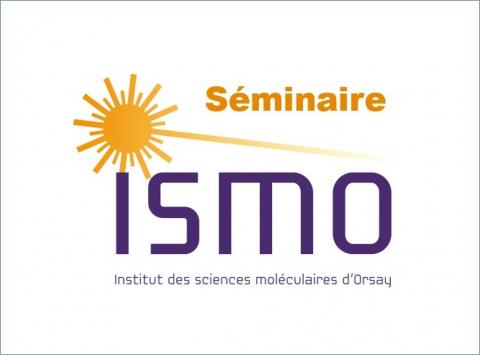
Séminaire de Jennifer Noble
Deactivation processes in photoexcited deprotonated aromatics : the influence of functional groups and heteroatoms on the stability of the anion and the dehydrogenated radical
Séminaire de Jennifer Noble
PIIM - Physique des Interactions Ioniques et Moléculaires, CNRS, Université Aix-Marseille
A photoexcited deprotonated anion can undergo deactivation via several competing mechanisms. Fragmentation of the anion gives rise to anionic (and neutral) fragments, while photodissociation of the electron forms a dehydrogenated neutral radical which may be stable or may fragment into neutral fragments. We have recently modified our experimental setup – based around a cryogenically cooled Paul trap – to allow the measurement of all these photoexcitation products across a wide spectral range.
The study of the UV-visible spectra of a multitude of deprotonated aromatic anions – with varying functional groups and heteroatoms – over the past three years has allowed us to derive some general conclusions upon the stability of the deprotonated anion and the dehydrogenated radical. We will discuss our recent results on simple benzoic and indolic aromatic molecules bearing carboxylate, phosphoryl, and sulfonate side chains. We will show, for example, that the deprotonation site determines the stability of the dehydrogenated radicals in amino acids.
http://www.ismo.universite-paris-saclay.fr/spip.php?article2591
Faculté des sciencesDeactivation processes in photoexcited deprotonated aromatics : the influence of functional groups and heteroatoms on the stability of the anion and the dehydrogenated radical
Séminaire de Jennifer Noble
PIIM - Physique des Interactions Ioniques et Moléculaires, CNRS, Université Aix-Marseille
A photoexcited deprotonated anion can undergo deactivation via several competing mechanisms. Fragmentation of the anion gives rise to anionic (and neutral) fragments, while photodissociation of the electron forms a dehydrogenated neutral radical which may be stable or may fragment into neutral fragments. We have recently modified our experimental setup – based around a cryogenically cooled Paul trap – to allow the measurement of all these photoexcitation products across a wide spectral range.
The study of the UV-visible spectra of a multitude of deprotonated aromatic anions – with varying functional groups and heteroatoms – over the past three years has allowed us to derive some general conclusions upon the stability of the deprotonated anion and the dehydrogenated radical. We will discuss our recent results on simple benzoic and indolic aromatic molecules bearing carboxylate, phosphoryl, and sulfonate side chains. We will show, for example, that the deprotonation site determines the stability of the dehydrogenated radicals in amino acids.
http://www.ismo.universite-paris-saclay.fr/spip.php?article2591
